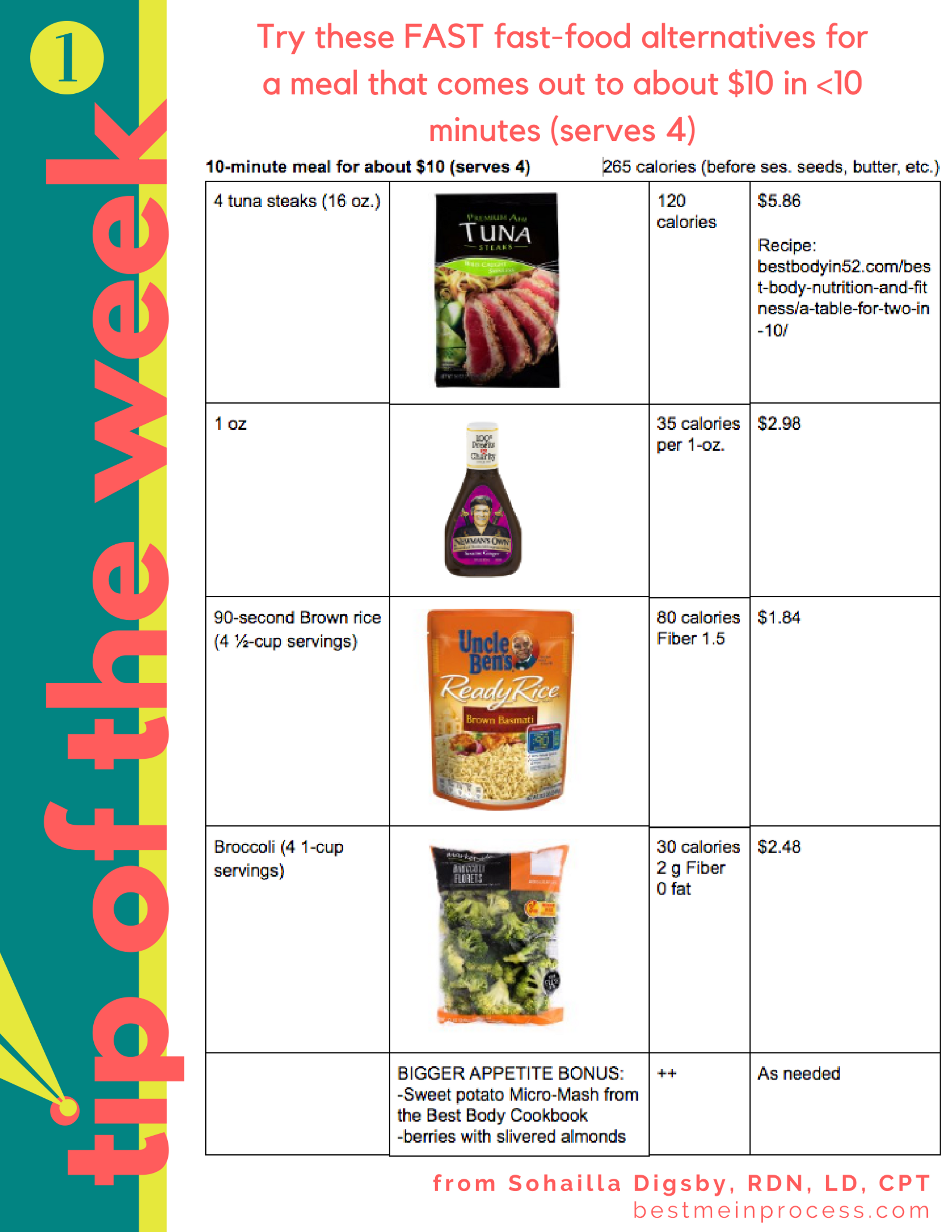

#Nutritional tip of the day free
Drink water, low sugar and sugar free beverages most often, instead of juice or sugar sweetened beverages (sodas, lemonade, sports beverages, sweet tea, chilled coffee drinks).ġ9. Fluid needs vary but women need up to 11.5 cups (2.7 liters) of fluids daily, and men about 15.5 cups (3.7 liters) daily.ġ8. Drinking eight, 8-ounce glasses of water is a good place to start. Keep hydrated-fluid counts for health and nutritionġ7. Plan to bring home leftovers to enjoy at another meal. Learn a few better options to choose regularly when eating out to make it easier to choose more healthful meals.ġ6.

Many restaurants have nutrition information online, and some APPs are helpful, too. Plan a few meals out occasionally based on your nutrition goals.ġ5. Any meal not prepared at home is “out,” including foods from a drive thru, work cafeterias, or pizza and other food deliveries.ġ4. If it’s once or twice a month, that’s a splurge. Eat out less frequently, and make more mindful choicesġ3. Consider trying one of the boxed meal prep delivery services to save time, if it fits your budget. Short on time, or avoiding crowds? Plan home delivery to meet your time schedule.ġ2. Go to the store and take advantage of reading labels and comparing food products. If you use coupons and check the store flyers, you can save money, too.ġ1. Make a grocery list for healthful foods and stick to it as much as possible. Include foods for quick breakfast prep, and those to pack for lunch or dinner as needed.ġ0. To save money, plan to eat some leftovers so you can make once and enjoy twice. Prepare a new recipe, or resume cooking the favorites you haven’t enjoyed in a while.ĩ. Stock more healthful snacks: fresh fruit, lower sugar or Greek yogurts, low fat cheese or peanut butter with crackers, hummus with raw veggies, 100 calorie packs of nuts or ¼ cup nuts, low sugar protein/granola bars.Ĩ. Purchase individually packed snacks for portion control or make your own portion packs.ħ. Keep the sweet and salty treats to a minimum. Eat regular meals including a variety of foods, so you’ll fill full, satisfied, and less likely to snack too much.Ħ. Eggplant or cauliflower steak Parmesan served over zucchini noodles, whole wheat or vegetable-based pasta, with a side salad or fruitĥ.Stir fried vegetables with tofu or tempeh served over quinoa.Bean and rice burritos with sliced onions and peppers, served with guacamole.Plan one day weekly to eat vegetarian meals and snacks like “meatless Mondays.” Here’s some meatless combos to whet your appetite: Enjoy soy foods like tofu, tempeh, soymilk, and soy yogurt.Ĥ. For your favorite bean, substitute pinto beans, kidney beans, chickpeas or lentils. Taste a different nut butter in place of peanut butter. Consider some of the new imitation meat products. Choose fresh, frozen or canned-all provide nutrients.ģ. Sample some non-meat proteins you haven’t eaten before. Learn what’s in season at Ģ. Don’t be lazy about fruits and vegetables! Remember to include the produce you enjoy at meals. They help reduce disease risks and promote health.

Different color fruits and vegetables contain colorful pigments called phytochemicals. Here’s 21 tips during National Nutrition Month to help “Personalize Your Plate” to reach your goals.ġ. Try a new vegetable or fruit each week. Maybe you simply want to eat better overall, but don’t know where to start. Do you want to lose weight, or gain it? Perhaps you want to lower your cholesterol or get your blood sugar under control. We're well into 2021 and we want to help you keep any resolutions you made to make it a healthier year, for the next 9 months and beyond! We asked our VCU Health dietitians to share some tips on how you can continue healthy eating habits unique to your food tastes, preferences and health concerns.


 0 kommentar(er)
0 kommentar(er)
